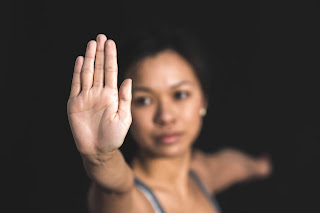What is yoga and what benefits could it offer to me?
What is yoga and what benefits could it offer to me?
Yoga meaning to join together originated in India 5000 years ago and combines various elements including exercise, breathing awareness, meditation, relaxation, positive thinking, and a healthy diet, to improve complete wellbeing, physically, emotionally and spiritually.
So how do each of these elements combine to ensure optimum health in the mind and body? Yoga consists of a variety of movements known as Asanas or poses which are a form of controlled and specific movements designed to improve tone and increase flexibility and strength in the muscles and internal organs. Becoming aware of the breath whilst performing the Asanas with a guided breath which is slow and rhythmic not only helps to increase the amount of oxygen you inhale into the body thereby increasing your lung capacity, but also allows the Asanas to be performed with precision and focus as movement and breath are united as one.
As the breath and Asanas combine, through the movement meditation naturally occurs due to the increased focus of the mind and body leading to a sense of relaxation and wellbeing. A healthy and positive mind set assists in replacing negative thoughts and emotions with positive ones to enable us to attain feelings of happiness and peace of mind in our daily lives and finally a healthy and balanced diet is high in prana which is life force energy, providing us with nourishment and optimum health.
There are 7 primary movements in Yoga; circumduction, hyperextension, abduction, adduction, flexion, extension and rotation and a combination of 84 Asanas to suit all levels from beginners to advanced levels. Yoga is a philosophy and consists of 8 limbs which when practised consistently can help us to lead a happier and more productive life.
The 8 limbs are individually very important and build upon one another so therefore it is recommended that they are practiced in a specific order which in turn can then help to guide us to lead a more purposeful life they are as follows:
The first limb is known as Yama’s, which is connected to your sense of integrity and ethical standards towards others and this includes practising kindness ,being truthful, not taking anything that does not belong to you, having personal control and non-attachment to things we do not need.
The second limb is Niyamas which are personal observations or the rules to follow and include personal cleanliness in our internal and external environment, inner contentment with what we have, self-discipline, self-study and devotion to the higher power.
The third limb are the Asanas which are otherwise known as the poses or postures which are practised
The fourth limb is Pranayama which is the control and becoming aware of the breath
The fifth limb is Pratyahara which is the bridge between the inner and outer world and controls all of the senses
The sixth limb is Dharana which is concentration and the cultivation of personal awareness
The seventh limb is Dhyana which takes many years of practising the other six limbs to master as it means to meditate to the divine and higher self
The eighth and final limb is Samadhi, the union with the divine, and the deepest stage of concentration where all the aspects come together as one.
There are many different types of yoga known collectively as Hatha consisting of Iyengar, Vinyasa, Bikram and Kundalini , all have their own individual styles and it is advised to research which will best suit your needs before embarking on a class. Practicing yoga on a regular basis will offer immense benefits including increased flexibility, relief from Stress and muscular discomfort, increased muscular strength, increased bone density and a better posture.
When starting out go at your own pace and limitations, your body will adapt in its own time so it is important not to push yourself too hard, yoga can be challenging but ultimately the end rewards will make all your efforts worthwhile.




Comments
Post a Comment